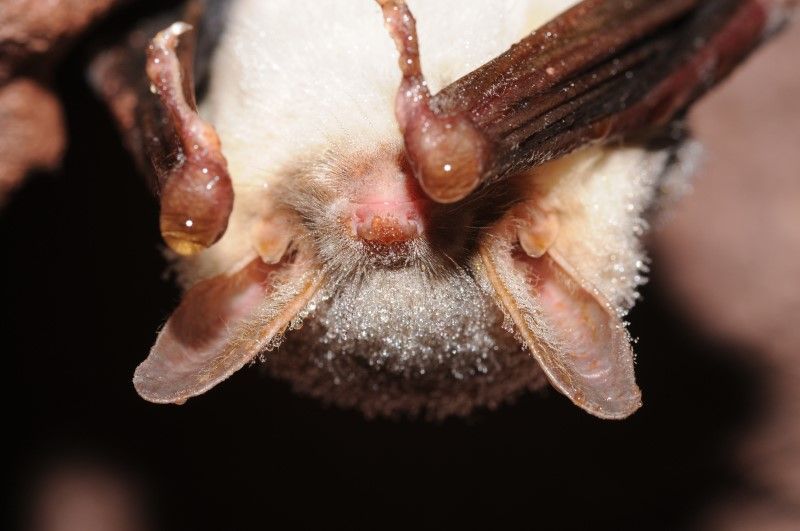Greater mouse-eared bat

Status
Native and rare
Population
Unknown
Scientific name
Myotis myotis
The greater mouse-eared bat was discovered in the UK in the 1958. Two hibernating colonies were found in the 1960s along the south coast of England, but the last record of a greater mouse-eared bat at the site was in 1988. In 1990, the species was officially declared extinct in the UK. In 2002, however, a juvenile male was discovered and has been recorded each year since. They are still present elsewhere in Europe, although their numbers there are thought to be declining.
The greater mouse-eared bat is the largest British bat species and the largest of the 11 Myotis species in Europe. It has broad wings and a body length of up to 8cm. Its fur is a sandy colour and it has a bare pink face with large ears that have a prominent tragus. The paler fur on its underside can be seen when they fly, which often follows a straight path along woodland edges or hedgerows.
Wingspan: 36 – 45cm
Weight: 28 – 40g
Lifespan: Up to 18 years
Reproduction
Males mate with several females in autumn. The females form maternity colonies (often in attics) in March and each has a single pup from June onwards.
Diet
Larger insects, either caught in flight (such as moths and cockchafers) or taken from the ground (such as crickets and beetles), as well as spiders
Summer roosts
Buildings and caves
Winter roosts
Caves, mines and cellars
Habitat
They are usually found around human settlements and hunt in woodland or over cultivated land.
Predators
Few natural predators
Threats
Nursery roosts may be subject to disturbance or destruction (individuals are susceptible to the chemicals used to treat timber roofs).
Ultrasound
Greater mouse-eared bats echolocate using frequencies between 22 and 86kHz, with most energy at 37kHz.
Status and conservation
GB Red List: Critically Endangered (CR).
Population and distribution
Unknown.
Did you know?
The greater mouse-eared bat has been known to travel over 300km between winter and summer roosts.
